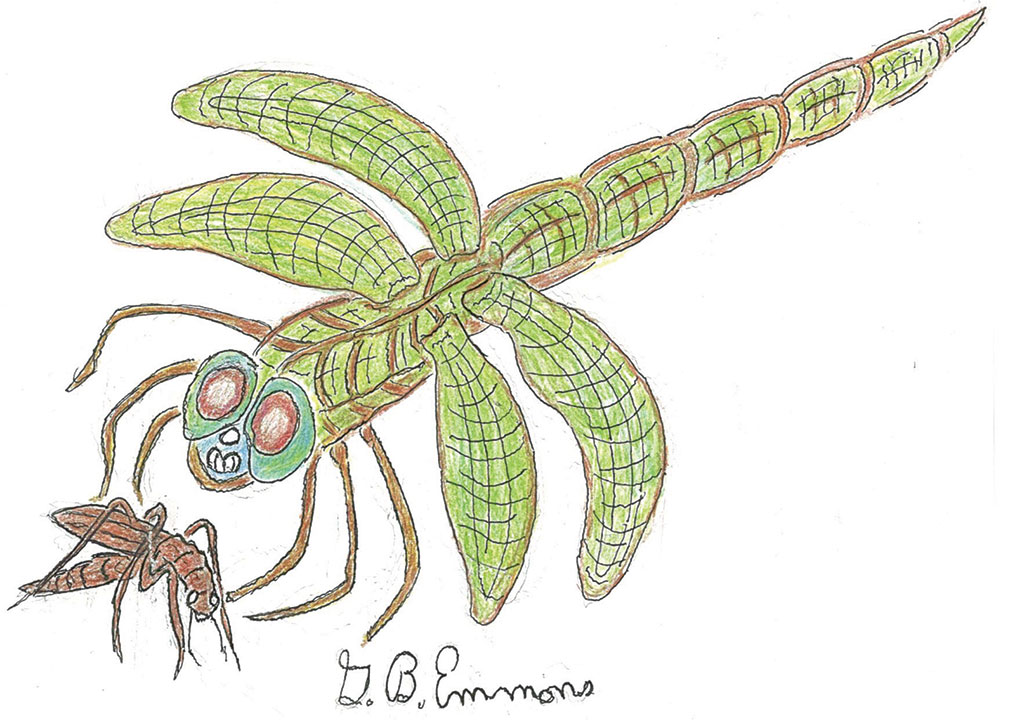If you live near the standing-water shoreline as we do on Little Bay in Fairhaven, our midsummer evenings on the back porch are filled with watching fleeting dragonflies and damselflies streaking back and forth to catch mosquitos in midair.
In New England alone, there are no less than four indigenous species of them that prevail along waterside shorelines of both salt and freshwater inlets of bays, lakes and ponds. The largest of them is the Green Darnier variety, as illustrated, about to eat a mosquito it has caught.
Mosquitos are their favorite prey, making the Green Darnier Dragonfly even more beneficial than ever in eliminating the possibility of the former infecting human beings with diseases that can be windblown like the new coronavirus that is so contagious.
All dragonflies have four wings, as shown in the illustration. These wings can be folded back or slanted in pitch to quickly fly in any one of six different directions. They move quickly, back and forth like a darning needle, which is another name for them. They also appear together mating in flight, one on the other piggyback for propagation. This appearance is used by Amish farmers to warn their children not to tell lies, or else their lips might be sewn together by what they called the “devil’s dragonfly.” After mating, the female will lay several thousand fertilized eggs on or near the surface of the water, attached to a split-leaf or plant just below the surface.
The eggs will, in about a week, hatch out to become aquatic nymphs called larvae, unless water-purity conditions are less than favorable. Usually a good part of a dragonfly’s life is initially underwater unless spraying of insecticides sterilizes them from hatching. In Rachael Carson’s book, Silent Spring, the spraying can be just as detrimental to their hatching as bird eggs for mosquito control. Actually, just the opposite can be very beneficial by the method of supplying hundreds of thousands of dragonfly larvae to areas of standing water in communities usually infested with mosquitos. To recommend using this unlikely creature for beneficial results is truly remarkable.
Fossils of the dragonfly date back some 300 million years on Earth, and are found subsequently on every continent in the world. How they got the mythical title of a dragon may be due to their resemblance of mythical, fearsome monsters during the age of dinosaurs. In Japan, the Samurai warriors saw them as warrior spirits of agility, power and victory, in battle to be copied. In China, they were a good-luck symbol of prosperity, harmony and fortune in a successful standard for life. For Native Americans, they were totems for both speed and versatility in predatory flight and a spirit of the beneficial wind that blew in their favor.
Since the coming of the coronavirus in our lives, we have had to take a closer look into the natural conditions of our environment. As never before, the concept of habitual hygiene conditions and our awareness of our natural conditions around us may well make us more appreciative of our own relationship together with others, somehow also shared with other living creatures.
By George B. Emmons
